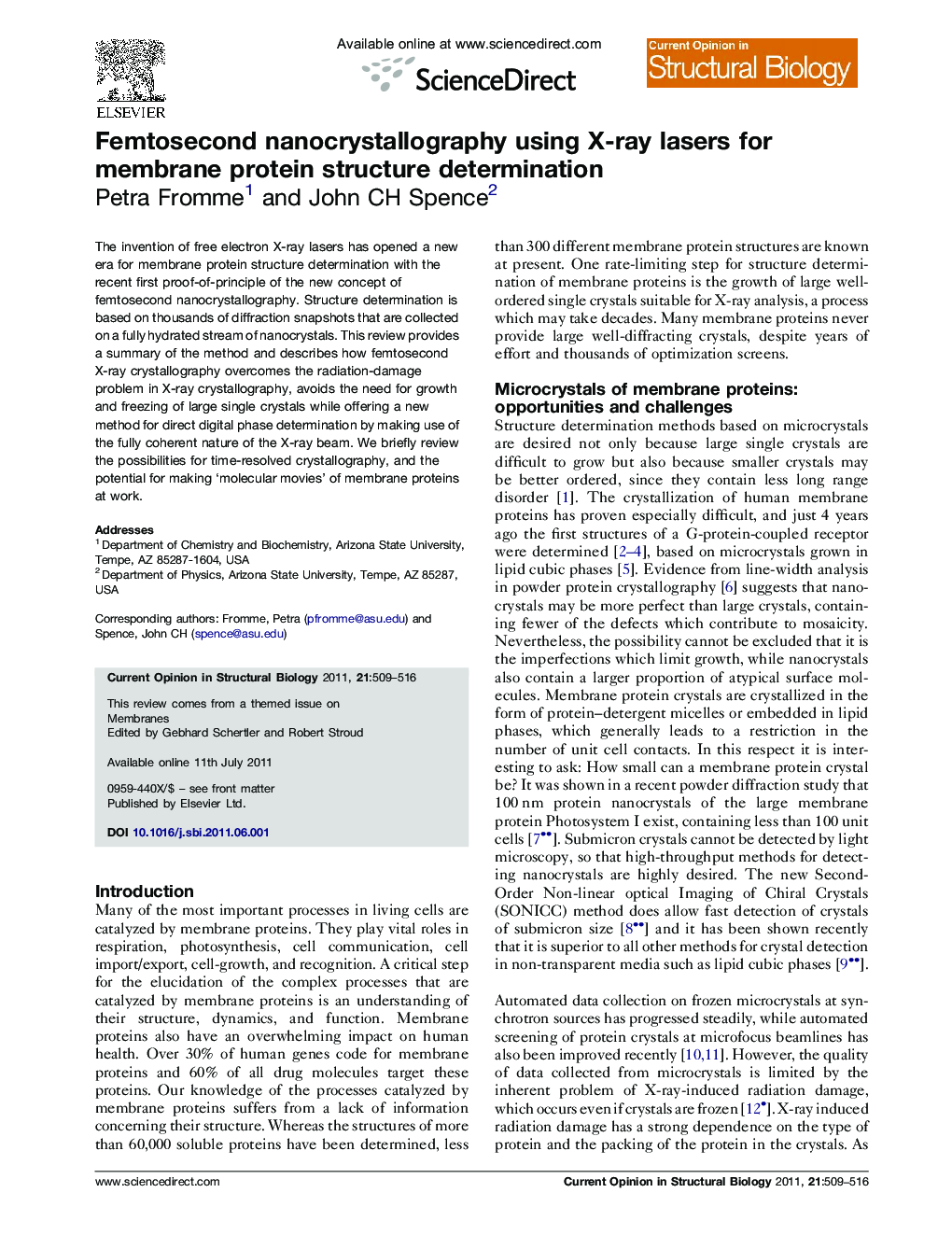| Article ID | Journal | Published Year | Pages | File Type |
|---|---|---|---|---|
| 1979333 | Current Opinion in Structural Biology | 2011 | 8 Pages |
The invention of free electron X-ray lasers has opened a new era for membrane protein structure determination with the recent first proof-of-principle of the new concept of femtosecond nanocrystallography. Structure determination is based on thousands of diffraction snapshots that are collected on a fully hydrated stream of nanocrystals. This review provides a summary of the method and describes how femtosecond X-ray crystallography overcomes the radiation-damage problem in X-ray crystallography, avoids the need for growth and freezing of large single crystals while offering a new method for direct digital phase determination by making use of the fully coherent nature of the X-ray beam. We briefly review the possibilities for time-resolved crystallography, and the potential for making ‘molecular movies’ of membrane proteins at work.
► Femtosecond nanocrystallography is based on Free Electron X-ray Lasers ► The diffract-before-destroy principle overcomes damage problem in crystallography ► Nanocrystals are delivered at Room temperature in stream by new type of gas-focusing injector ► Coherently illuminated nanocrystals provide interference effects solving the phase problem ► The method opens new avenues for time-resolved studies showing proteins at work.
